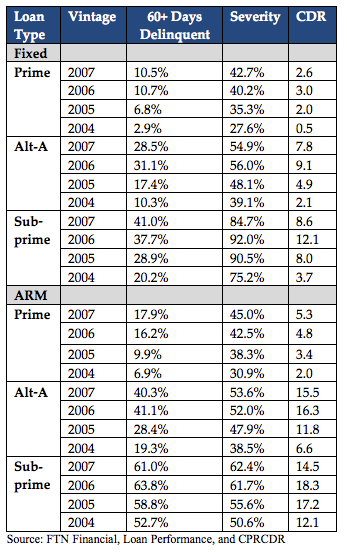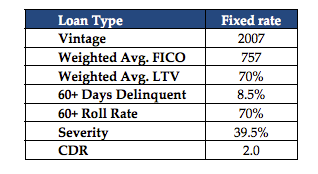The first stabilization step for the future of the United States housing market was announced by the Obama Administration in February 2011. The proposal did not earmark one exact plan to be chosen, but presented three sensible alternatives to be considered in the distant future. The plan proposed a few options to use as a benchmark for the reform of the agency and private sponsored mortgage market. The mortgage industry was presented with no major surprises, no near term implementation timeline and no shock to the fragile housing market.
The much anticipated Government-Sponsored Enterprise (GSE) Reform Proposal to stabilize the future of the housing market was finally made public by the Obama Administration on February 11, 2011. The report on the GSE’s included no major unexpected proposals, no surprises in wording (which historically can panic the mortgage market) and three options for restructuring the United States mortgage market. All three of the options would be implemented gradually and were presented without endorsing any one option.
These options were as follows: 1) Full GSE gradual shutdown, 2) GSE gradual shutdown with a crisis mode backstop and 3) GSE gradual shutdown with reinsurance. The proposal also consisted of four key common themes within all of the proposals. The commonalities were less government, an eventual wind down of the GSEs, a focus on private investment in the mortgage market and an emphasis on liquid rental property market (multi-family).
The first option is a full shutdown of the GSEs (Fannie Mae and Freddie Mac) and an orderly transition of the mortgage market to private capital. This scenario contemplates the only government support for the market coming through the Federal Housing Administration (FHA), the Veterans Administration (VA) and the U.S. Department of Agriculture (USDA). The FHA/VA is the GNMA mortgage label that recently made up close to 30% of the entire mortgage market. Winding down Fannie Mae and Freddie Mac with a responsible timeline is the main goal stated in the report to Congress. The proposal presented an extremely gradual approach, but did not pinpoint any exact dates when the shut down would begin or end. The stated goal is to bring back private investors wherever possible to accelerate the GSE elimination. A few suggestions were mentioned as to how the role of the GSE’s could be altered to reduce their involvement in the market and allow private capital to play a greater role in mortgage finance. Among those recommendations were to increase guarantee fees to private investors, increase the use of private insurance, lower the conforming loan limit from $417,000 (larger mortgage loans then flow to the private sector) and a focus on a wind down of both Fannie Mae and Freddie Mac’s investment portfolios (10% annual pace). All of these suggestions were well written in the proposal, giving full respect to the fragile housing market. It emphasized matching the timing of implementation in line with the pace of healing of the market going forward. Slow and steady wins the race.
The second option is a similar shut down of the GSEs mentioned above. The difference on this option is the government would develop a mechanism to “backstop” the mortgage market in crisis mode. The backstop would maintain a small presence in the market during normal functioning times, but would be ready to scale up to a larger share of the agency guaranteed mortgage market if private capital withdrew in times of financial stress. Liquidity would be provided in the form of a government guaranteed mortgage origination. The backstop would also include higher guarantee fees than normal, but still provide the market with liquidity and origination in stressful times if private capital shuts down.
The third and last proposal contained the GSE shut down mentioned in proposal one and two, including the continued support of the FHA/VA and USDA. This option also includes a reinsurance instrument. The proposed structure would allow private mortgage guarantee companies to insure mortgage backed securities that meet stringent underwriting standards. This includes securities that would be reinsured by a government reinsurer for a premium that would be put aside to cover claims in the future.
The key theme in all three proposals focuses on maintaining the GNMA sponsored programs, while at the same time phasing out Fannie Mae and Freddie Mac. Within that theme is a phasing in sponsorship of private label investment with proper underwriting guidelines. All of the proposals will ultimately result in higher mortgage rates in the future. GNMA already proposed a 25 basis point insurance premium increase starting in 2012. Capital building will be the main theme. Traditionally private label mortgage backed securities will be higher in costs (basis points on your mortgage rate) for a private entity to even start to initiate underwriting and securitizing. In the end, these costs will have to be passed on through to the home buyer in the form of a higher mortgage rate.
One of the many goals of the February 11th proposal is to maintain a consistent nationwide underwriting standard to better serve American households. A second and equally important goal is to maintain mortgage credit underwriting and contain risk during the transition into the new proposal. In the end, proving you have a job, confirming you make what you say you earn and having the underwriter actually process a mortgage application correctly (100% full documentation), will foster a stable mortgage market going forward in line with government goals.
Higher rates will be in the cards in a market that would have a high percentage of loan origination and insurance provided through the private capital markets. Historically, private mortgages rates are 35 to 75 basis points higher than a government guaranteed mortgage. Government guaranteed mortgages offer interest rate risk. Private mortgages include both interest rate risk and credit risk, which necessitates higher rates. Although this is what is in the “proposal,” we will see going forward what percentage of the mortgage market actually becomes private.
The mortgage markets response was overwhelmingly positive after the announcement. The mortgage market immediately witnessed bond prices go up in value. No one likes surprises in this market and in this well thought out release, there were none.
The February 11, 2011 press release and a copy of proposal can be found on the U.S. Department of the Treasury’s website https://www.treasury.gov/initiatives/Pages/housing.aspx.
Christopher M. Priebe
Vice President
Mortgage Backed Securities Trader
For more information, contact:
Joel B. Cramer, CFA
Director of Sales and Marketing
joel.cramer@aamcompany.com
Greg Curran, CFA
VP, Business Development
greg.curran@aamcompany.com
Disclaimer: Asset Allocation & Management Company, LLC (AAM) is an investment adviser registered with the Securities and Exchange Commission, specializing in fixed-income asset management services for insurance companies. This information was developed using publicly available information, internally developed data and outside sources believed to be reliable. While all reasonable care has been taken to ensure that the facts stated and the opinions given are accurate, complete and reasonable, liability is expressly disclaimed by AAM and any affiliates (collectively known as “AAM”), and their representative officers and employees. This report has been prepared for informational purposes only and does not purport to represent a complete analysis of any security, company or industry discussed. Any opinions and/or recommendations expressed are subject to change without notice and should be considered only as part of a diversified portfolio. Past performance is not an indication of future returns.
This information is distributed to recipients including AAM, any of which may have acted on the basis of the information, or may have an ownership interest in securities to which the information relates. It may also be distributed to clients of AAM, as well as to other recipients with whom no such client relationship exists. Providing this information does not, in and of itself, constitute a recommendation by AAM, nor does it imply that the purchase or sale of any security is suitable for the recipient. Investing in the bond market is subject to certain risks including market, interest-rate, issuer, credit, inflation, liquidity, valuation, volatility, prepayment and extension. No part of this material may be reproduced in any form, or referred to in any other publication, without express written permission.


